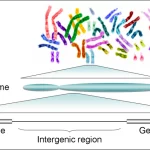
GWAS Explained: From Genetic Markers to Medical Breakthroughs
September 6, 2023Navigating the Complexities of GWAS: What You Need to Know
Introduction
Genome-Wide Association Studies (GWAS) have become a cornerstone in genetic research, opening new pathways to understanding human disease and traits. By scanning the entire genome for variations associated with particular conditions, GWAS have yielded valuable insights. However, like any scientific method, they come with their own set of advantages and limitations. In this comprehensive essay, we will delve into the principles, applications, benefits, and drawbacks of GWAS, aiming to give a well-rounded understanding of this powerful research tool.
The Basic Principle of GWAS
GWAS operate on a straightforward principle: scrutinize the genomes of many individuals to find statistical correlations between specific genetic variants and diseases or traits. The most commonly examined variations are single nucleotide polymorphisms (SNPs), but the approach can also consider other types of variations like copy-number variants. The essence of GWAS is to provide a bird’s-eye view of the genome, identifying which genetic markers are associated with specific outcomes.
Purpose of GWAS Analysis
The main goal of GWAS is to identify genetic variants that have a statistical association with diseases or traits. This can range from conditions like heart disease and diabetes to more benign traits like height. The insights gained can then be used to develop targeted treatments, diagnostic methods, or even preventative strategies.
Advantages of GWAS
GWAS come with a series of benefits that have made them indispensable in genetic research. Some of the key advantages include:
1. Identification of Genetic Variants: The ability to scan the entire genome allows for a thorough identification of genetic markers that might be involved in diseases or traits.
2. Cost-effectiveness: Compared to other forms of genetic analysis like sequencing, GWAS are generally more affordable, allowing for larger sample sizes.
3. Non-candidate-driven approach: Unlike methods that focus on pre-selected genes, GWAS can reveal novel genes and pathways associated with diseases, offering more comprehensive insights.
Limitations of GWAS
Despite the advantages, there are limitations that one must consider:
1. Sample Size: Larger samples offer more statistical power, but obtaining these large samples can be a practical hindrance.
2. False Positives: The risk of identifying genetic variants that appear related to a trait or disease but aren’t, is an ongoing concern.
3. Lack of Diversity: Most GWAS have been focused on populations of European descent, limiting their applicability to a broader range of ethnic backgrounds.
Biological Insights from GWAS
GWAS has brought to light several crucial biological insights. It has led to the identification of previously unknown genes and pathways and has provided a deeper understanding of the mechanisms of various diseases. This information is invaluable for the development of new treatments and medications.
Challenges in Interpreting GWAS Results
Interpreting GWAS results is not straightforward and requires careful consideration of various factors like biological plausibility, statistical significance, and the potential for false positives. In addition, follow-up studies are often needed to understand the biological implications of the associations found.
Conclusion
Genome-Wide Association Studies have revolutionized our understanding of the genetic basis of diseases and traits. They offer an efficient, cost-effective way to study genetic variations on a large scale. However, they are not without limitations, including concerns about sample size, false positives, and lack of diversity. As the field continues to evolve, leveraging the strengths while addressing the limitations of GWAS will be crucial for future breakthroughs in genetics and medicine.


















